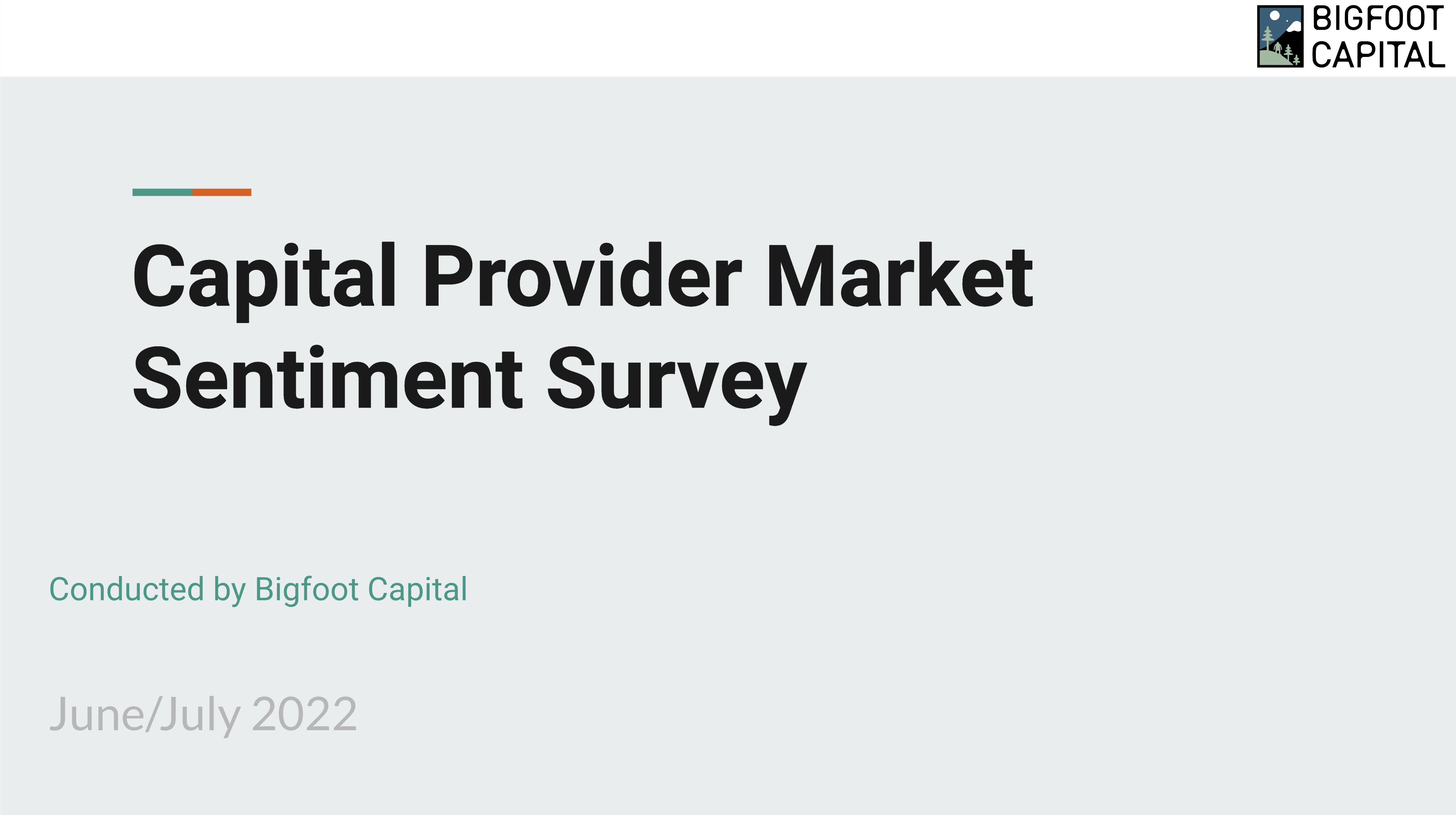
This is a loaded question with no simple answer. The forms of capital seeking SaaS investments today are more diversified than ever and what each of them needs to see to make an investment varies greatly.In order to get a sense for what investors are looking for to write a check, you must first understand the different investor personas (and their motivations/goals), then conduct investor discovery to qualify your targets. Once you have your target list, then you must run a full-blown sales process.In this post, we discuss four types of capital sources (2 equity, 2 debt) potentially available to early-stage (sub $5M ARR) SaaS companies, touching on what each looks for and why. This is meant to inform your investor persona development and targeting.
- Angels
- VCs
- Banks
- Alternative Financing (non-bank lending)
If you want the tldr: version, skip to the bottom for takeaways and additional resources. What Do SaaS Investors Look for in the Companies They Invest in?
Angels (Equity)
What they look for and why:
- Revenue: From my experience in Denver and other non-bay area markets, angel investors need to see revenue before writing a check.
- Why: Nothing in early-stage SaaS proves traction more than recurring revenue.
- An Industry or Solution They Know: Angels are more prone to invest into companies providing a product or addressing a market where they have experience.
- They have comfort and confidence that they understand what you’re doing and the ultimate potential, and they feel they may have valuable experience and contacts to bring to bear (good for you and you should ask them how they’re going to help you).
- Future Capital/Liquidity Potential: Angels are generally investing in companies they believe have near-term potential (next 12-18 months) for a venture capital or alternative financing round for a valuation markup or medium-term potential (within 5 years) of an exit for liquidity.
- Most angels write smaller (<$100k) checks, so they need to believe you will be able to access future capital beyond what they can provide. Or, they need to see that you have a viable exit plan at some point so they can believe they’ll get their money out with return and not be riding along for 10 years. They like liquidity.
VCs (Equity)
What they look for and why:
- Exceptional, Exponential Growth: Less than 1% of companies can achieve the TTDDD growth model that VC’s need to believe is achievable to warrant an investment. At the early-stage, you’ll need to be growing double digits for multiple months to be of interest to VCs. You can use our tool here to get a sense for how annual growth translates to a monthly growth requirement.
- Why: Venture capital is a binary game where you are expected to either fail (provide 0 return) or blow up to a $1BN+ valuation (unicorn status baby). Unicorns return the fund and then some. This is how VC’s get rich and raise their next fund to keep getting richer. That’s because they only get really paid when once they’ve “returned the fund”, which means returning all of their investors’ capital along with what’s called a preferred return.
- Market Potential: You need to be addressing enormous, multi-billion markets.
- In order to get to $100M+ in revenue and thus your $1BN+ valuation, you need to have a lot of customers to go after. If you’re able to capture 1% of a $10BN market, you can get there. If you’re in a $500M market, it’s a lot harder as you need dominant (20+%) market share.
VCs like monopoly plays, which can happen in “smaller” addressable markets, but it’s more likely that you’re addressing either one massive market (e.g., healthcare) or multiple multi-billion markets. If the latter, you either need to expand into more, look-alike verticals over time (e.g., project management software for plumbers that expands to electricians then to general contractors and all of their subcontractors) or be providing a truly horizontal solution (e.g., CRM) that can be largely industry agnostic (e.g., Salesforce).
- Team: You need to show VCs that you currently have and can continue to build the team to achieve these lofty expectations.
- VCs are making a long-term bet on not only you, but your whole company. They need extreme conviction about who they’re getting in the boat with for the next 10 years. Not only do you need to be an A player (previous exits, exceptional domain expertise, win at all costs mentality, insane commitment), you also need to show that you can collect and retain other A players. Hyper growth / market domination is not for the faint of heart.
Banks (Debt)
What they look for and why:
- Deep Pockets: If a bank is providing venture debt (think SVB, Square 1, Comerica, Bridge Bank), they’re looking for meaningful institutional venture capital support. If it’s a more traditional bank that may consider financing your SaaS business a personal guarantor(s) with substantial personal assets that the bank could go after in the event the company is unable to pay its obligation.
- Why: Given the asset light nature of SaaS businesses and most bank lenders’ lack of comfort with cash flow lending, there has to be a form of potential repayment beyond the business. For venture debt, it’s that the existing VC backers will continue writing checks to the company. For traditional debt, the guarantors (owners or third-party) will be the ones expected to pony up and satisfy the obligations should the business not be able to do so.
- Collateral: This is more relevant for traditional, asset-based bank financing but also applies to venture debt cash flow lending. In asset-backed bank financings, there must be real collateral (think A/R, inventory, other fixed assets such as real estate or equipment) to lend against. For venture debt lenders, they’ll be focused on your recurring revenue streams in conjunction with your VC backing. Both types of facilities will generally be senior secured on all assets of the business, including the intellectual property.
- All lenders have to justify their investments both upfront and on an ongoing basis with some form of collateral base, be it real tangible assets (current and long-term), outside capital support or cash flow (or the potential of cash flow). The collateral determines how much they’ll lend (% of assets, multiple of MRR or cash flow, or % of total capitalization). In the event of a “workout” scenario, lenders will look to the collateral (along with the guarantors or VC backers) to fulfill the loan obligations.
- Consistency: Traditional banks doing traditional lending prefer consistency and predictability over growth. So, don’t show them a hyper-growth plan, they’ll freak out. In the case of venture debt, results may vary. If you’re a venture debt candidate, that means you’ve raised venture capital, which means you’re putting forth an aggressive growth plan. If you’re looking for an MRR line of credit from a bank, they’ll want to see more of the consistency/predictability. Banks who provide this product have tightened up on this form of lending over the last 24 months.
- Consistency pays the bills, which means it services the debt and allows bankers to rest well at night. It shows you have a sustainable business that can handle debt. If you’re trying to grow too fast, banks don’t view that positively. It’s risk, not reward for them.
Alternative Financing (Non-Bank Lending / Debt)
This is where Bigfoot sits. Here’s what we look for and why:
- Initial and Growing Revenue: Speaking for Bigfoot, we would never invest debt into a pre-revenue company (as pure-play venture debt providers are willing to do). In fact, we’re looking for companies to have $1M+ ARR before we invest. So, the initial revenue has to be there and it needs to be growing, not at TTDDD scale, but ideally in the 25-100% per year range.
- Why: It’s just too dangerous for all parties to put debt on a company too early and expect for it to work out well for everyone. With a debt investment, you’re placing your bet and capping your return potential based on the return of the investment along with some periodic payment (interest or share in revenue). You’re not betting on a 10-100x equity style return to be potentially delivered someday, and if it doesn’t happen, ah well. Of course, growth matters too. In order to achieve our return targets, we need our companies to grow, just not in a crazy fashion. If we’re using a revenue-sharing structure, we’re modeling revenue growth over the term of our facility to hit our target. If this growth does not occur, we’re going to have a really hard time getting there.
- Capital Efficiency: Debt investors do not have a growth at all costs mindset. It’s much more of a quantitative analysis than equity investing and it needs to be proven that the capital can be put to work efficiently to produce returns for the company and service the debt payments.
- Again, I’m speaking as a non-venture debt provider when I say we’re counting on the fundamentals of the company when we make our investment. Capital support is a component of this, but it’s secondary. That is, we’re not primarily relying on future capitalization events to provider our repayment, which is the case for pure venture debt providers. Remember, pure venture debt is truly only available to companies that have already raised (and will continue to raise) institutional venture capital. Given that we’re not banking on that happening, we need to believe the company can stand on its own without that support.
- Capital Stewardship: We look to see “smart” capital plans with well thought through investment plans backed by existing data.
- I’m not saying we’re the only investor looking for this, of course. I am saying that we expect companies we support to be scrappy, not frivolous and cavalier, with their resources. Not everything goes to plan, so operating with some capital buffer and conservatism is important.
Takeaways
No capital is easy to come by and, at times, you are certainly better served to say screw it and just focus on your business. Hopefully, this piece gives you a sense for some of the things potential capital partners are thinking about and digging into as they are evaluating your company.What they look for and why:
- Angels: Existing revenue, an industry/product they and the team know, future funding/exit viability and plan
- Venture Capital: Hypergrowth potential in massive markets addressed by a team of A players
- Banks: Measured, consistent growth from a business with its own assets or backed by substantial personal assets and historically proven cash flow
- Alternative Financing: Businesses capable of achieving high growth rates without relying upon ongoing substantial capital support.
Additional resources to dig deeper:
- Bigfoot Capital, Techstars Ventures, SaaSOptics webinar on raising early-stage capital — this covers a lot of what early-stage investors are looking for and the options you may have available to you.
- 7 metrics for your capital raise — this provides a Google Sheets CRM template for managing a capital raise process. You can also just have a full investor pipeline in whatever CRM you use. I started out in Google Sheets, but now use Streak for this.
- The SaaS Capital (or Funding) Continuum: 10 Forms From Inception to Exit — The forms of capital available to support a business over time.








